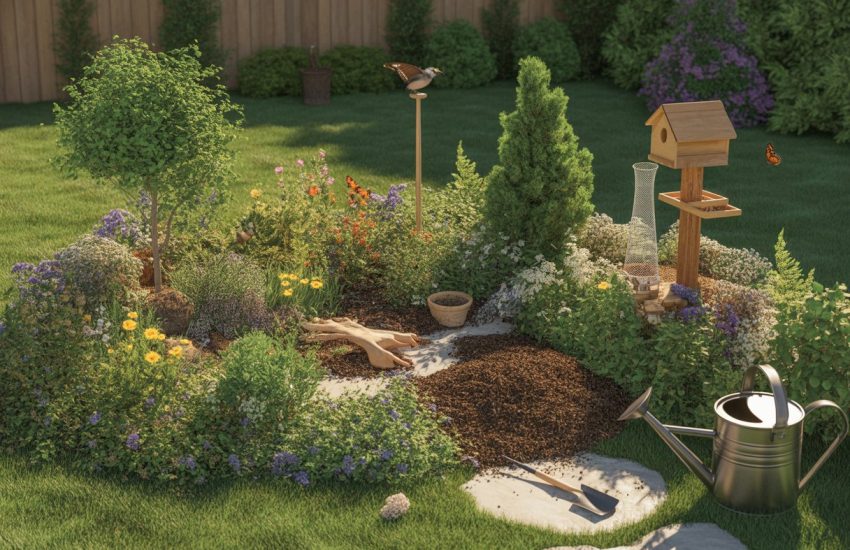How to Care for Gardenias in Pots Outside: Tips and Tricks
Gardenias are a popular shrub known for their fragrant blooms and glossy green leaves. Although they are typically grown outdoors in warm, humid climates, they can also be grown in pots outside. Caring for gardenias in pots requires attention to their specific needs, including proper watering, fertilization, and placement.

One of the most important aspects of caring for gardenias in pots is ensuring they receive the right amount of water. Gardenias require consistently moist soil, but they do not like to be waterlogged. Overwatering can lead to root rot and other issues. It is important to water gardenias deeply but infrequently, allowing the soil to dry out slightly between waterings.
In addition to proper watering, gardenias in pots require regular fertilization to thrive. They benefit from a balanced fertilizer applied every four to six weeks during the growing season. Gardenias also prefer slightly acidic soil, so it may be necessary to amend the soil with acidic materials such as peat moss or pine needles. By following these care tips, gardenias in pots can produce beautiful blooms and lush foliage.
Choosing the Right Pot and Location

Selecting the Perfect Pot
When it comes to growing gardenias in pots, choosing the right pot is crucial. Gardenias prefer to grow in slightly acidic soil, so it’s best to choose a pot made of a material that won’t affect the pH level of the soil. Terracotta pots are a great option as they are porous and allow for good drainage. Plastic pots are also a good choice, as they are lightweight and won’t crack in cold temperatures.
It’s important to choose a pot that is large enough to accommodate the gardenia’s root system. As a general rule of thumb, the pot should be at least 2-3 inches larger in diameter than the root ball. This will give the roots enough room to grow and prevent the plant from becoming root-bound.
Finding the Ideal Location
When it comes to finding the ideal location for your potted gardenias, there are a few things to keep in mind. Gardenias prefer bright, indirect light, so it’s best to place them in a location that receives morning sun and afternoon shade. If you live in a hot climate, it’s important to protect your gardenias from the intense afternoon sun, as this can cause the leaves to wilt and burn.
During the summer months, gardenias can be placed outdoors on a patio or balcony. However, in colder climates, it’s best to bring them indoors during the winter months to protect them from freezing temperatures. If you do bring your gardenias indoors, be sure to place them in a bright, sunny location, such as a south-facing window.
By choosing the right pot and location for your gardenias, you can help ensure that they thrive and produce beautiful blooms year after year.
Maintaining Gardenias in Pots

Gardenias are beautiful and fragrant plants that are perfect for growing in pots outside. However, they require proper care and maintenance to thrive. Here are some tips on how to maintain gardenias in pots.
Soil and Watering Requirements
Gardenias need moist, well-draining soil that is slightly acidic (pH 5.0-6.0). Use a potting mix that is specifically designed for acid-loving plants, or mix your own by combining peat moss, perlite, and vermiculite. Water your gardenias regularly, keeping the soil moist but not waterlogged. Avoid letting the soil dry out completely, as this can cause stress and damage to the plant.
Fertilization and Pruning Practices
Fertilize your gardenias every 4-6 weeks during the growing season (spring and summer) with a fertilizer that is formulated for acid-loving plants. Prune your gardenias after they have finished blooming to promote bushy growth and remove any dead or damaged branches.
Pest Management and Disease Prevention
Gardenias are susceptible to pests such as aphids, mealybugs, spider mites, and whiteflies. To prevent infestations, inspect your plants regularly and treat any problems immediately. You can use insecticidal soap, neem oil, or horticultural oil to control pests. Gardenias can also be prone to root rot, which can be caused by overwatering or poor drainage. To prevent root rot, make sure your pots have adequate drainage and avoid overwatering.
Overall, with proper care and maintenance, gardenias can thrive in pots outside. Use organic mulch, such as compost or shredded leaves, to help retain moisture and provide nutrients to the soil. Gardenias prefer warm, moist conditions, so keep them in a spot that receives partial sun and shelter from strong winds. With the right care, your gardenias will reward you with beautiful blooms and a heavenly fragrance.

